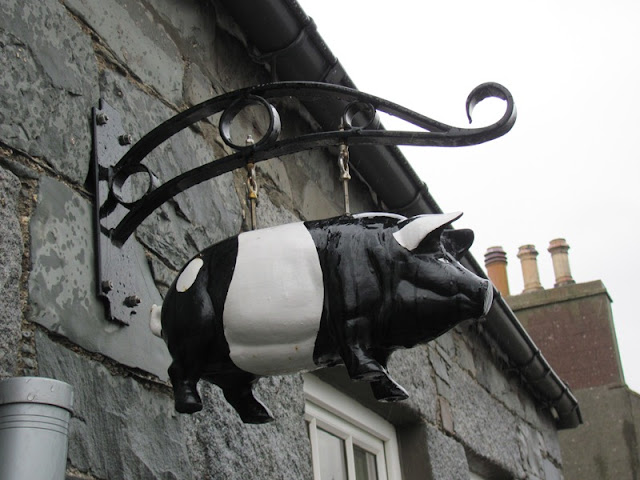On my travels I occasionally drive up a wee bit of the Ayrshire coast, where you get a good view of the Isle of Arran. The Arran hills, the tallest of which is Goat Fell at 2866 feet, are often called the Sleeping Warrior due to the way they appeared from the mainland and when I passed in march they looked good with their dusting of snow. The last remnants of Winter I thought.
It seems that I was quite wrong about that one. Winter returned with avengeance a few weeks later. I was at work at the time but I was sent these pictures of Kirkcudbright in the snow - I've never seen anything like this much snow there before.
Amongst the ferries and fishing boats and other sorts of marine vessels that are to be found on the Clyde, these sinister little beasties are often to be spotted sneeking through.
I had a wander out to the 13th century Glenluce Abbey one rather drippy afternoon with a view to waving my Historic Scotland pass about and wandering in, unfortunately I was still a couple of weeks away from opening time so here's a few shots from outside the perimeter.
My little Galloway tour of closed places (I had already admired the locked gates of the Newton Stewart Museum before Glenluce Abbey) then led me to Port William where I spotted some pigs in a backyard. Not common and certainly worth stopping for.
Turns out that these pigs at the Killantrae Burn cottages aren't made from bacon at all, but from oak and carved with a chainsaw.
In celebration of it's history as village piggery, butcher and that rather unpleasant inbetween stage we try to pretend doesn't exist, the cottages have this little fellow hanging outside it.
Port William has a statue, known locally as The Man by Andrew Brown
Mr Brown has some photographs on his website of the making of the sculpture here.
The statue has a plaque which quotes the famous lines, "What is this life, if full of care, We have no time to stand and stare?" . To me the fellow is wringing his hands and looks distinctly worried.
It is actually not the original statue, which was made of ferroconcrete and didn't survive very well so a new one was made on bronze. The old statue, also by Andrew Brown (as far as I can see), has been refurbished and is now owned by a local person - a picture of it appears on Wikipedia and it certainly looks a bit more relaxed.
Meanwhile in Castle Douglas, an old unused shop front has been subject to a little decoration.
In my quarter of a century as a chemist, it is still find it is the alchemy of the kitchen which produces the finest results. I'm far from an expert, though I can find my way into a tin of beans and produce a passable jam sandwich (not at the same time). I gathered these ingredients together in a moment of ambition.

....and....Tada!
It's not the greatest ambition a chap could have but I'm really rather fond of macaroni and cheese and this is about the best one I've made (by a country mile - previous attempts at cheese sauce have been quite disastrous).
I shall leave you with a sunset shot of Carlingwark Loch in Castle Douglas.











































